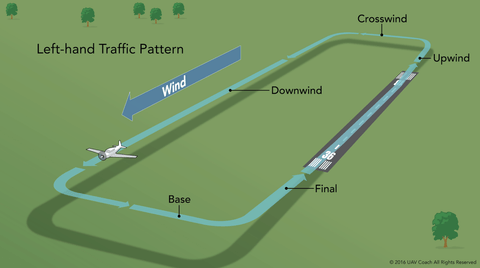I'm A Pilot!
I got my first drone as a gift during the summer of 2020, and since then it's become one of my favorite tools for capturing images and video of the world around me. I love how it makes even the most familiar places feel new again, and I've really enjoyed using it as an introduction to aerial photography. Plus, it's just really damn cool to fly.
Until this point, I've been flying as a recreational pilot, which is what all drone operators must do. But, my skills have improved, so in May I decided to take my flying a bit more seriously. I committed to getting licensed by the FAA as a remote pilot in July, which would allow me to fly commercially to take on jobs and/or sell my images and footage.
Getting Licensed
The biggest hurdle to becoming a licensed commercial pilot is passing what's known as the Part 107 exam. It's a 60-question in-person written exam designed to test your understanding of what's required to fly an aircraft. That includes weather patterns, complex maps and charts, airspace classifications, safety guidelines and more. While it's aimed at drone operators, the test itself also has a ton of overlap in topic areas that are required for other major pilots (airline, military, etc). So, when you pass this exam, you are a legitimate pilot in the FAA's eyes - which is pretty cool!
Because of that, the test is no cakewalk. It's very passable, and there are some terrific free materials out there to help prep (see links below), but it contains information most people have never seen before. Some of the information is also based on mostly outdated methods for understanding things like weather, airspace and traffic patterns. So, you end up being tested on things like this:
 The FAA's airspace chart for the greater Boston area
The FAA's airspace chart for the greater Boston area

Believe it or not, this is a weather report!

I have nightmares about these questions...
Taking the Test
I studied for about 10-12 hours in total, and once I was scoring in the 90's on my practice tests I headed into the local PSI testing center in Charlestown, MA to take the test. If you've never taken a standardized test outside of a school setting before, everything is very official. You get some paperwork to fill out, a 1:1 run down of do's/dont's from the proctor, and then you go into a separate room with cubicles to take the exam on a designated computer. All your belongings (wallet, keys, phone, etc) are put in a locked duffel so you can't cheat your way through the test. Major DMV learner's permit vibes.

Thankfully, you are provided with this legend, which I used for most questions
My exam was about 30% sectional airspace charts (the first of the two images above), 30% weather related questions, 20% safety guidelines, and 20% other regulations. I finished in about 45 minutes (you are allotted 2 hours) feeling a lot more nervous than I expected. Very few of the actual exam questions had appeared in my study materials, so this really was a test of how well you apply the concepts the FAA wants you to learn - along with some questions designed to trick you.
Luckily, when the proctor printed out the results, I could finally exhale - I scored a 90%!
I learned a lot through this experience, and not just about the material on the test. I can't tell you the last time I studied hard for something, so it was nice to prove to myself that my school education is still with me. It also felt great to put a big plan into motion and follow through with a positive result. I'm really excited to have passed, and for the doors this will now open for me.
So, I hope you like drone footage and aerial photos, because you can expect to see a lot more of it!
Recommended Study Materials
Want to take the Part 107 exam? Below are the materials I used to study for the exam. I didn't take any classes, so these are all free. Good luck!
- FAA Part 107 study materials (scroll to the bottom)
- Tony Northrup Part 107 study guide
- Better B-Roll Part 107 Practice Questions Guide
- Pilot Institute - Remote ID and Flying Over People/At Night
- Pilot Institute - Part 107 Study Guide
- UAV Ground School Part 107 Practice Test
- J Rupprecht Law Part 107 Test Questions
- Drone Coach Part 107 Free Practice Exam
